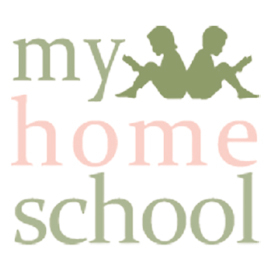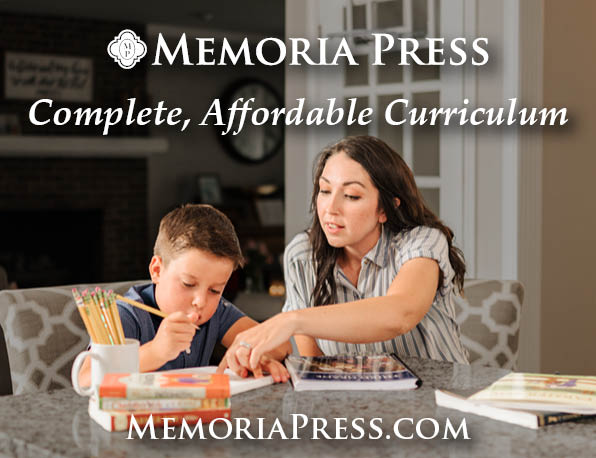My Homeschool offers complete programs (except for math) for kindergarten through tenth grade based on Charlotte Mason’s methodology. Complete math lessons are included for kindergarten through second grade, but you will need to purchase a separate math curriculum for the other grades. (You can save 50% on CTC Math for those in the U.S., Math Online for those in Australia, and Math Buddy for those in New Zealand by using links provided by My Homeschool.) After a course is purchased, it can be used again for additional children within the family for no extra charge as long as the parent remains an active member of the My Homeschool community.
The curriculum was developed and is based in Australia, and while it has elements specific to Australia across the curriculum, it teaches a strongly globalist perspective. Those living in countries other than Australia will need to add coverage of their own country’s history, and they might want to substitute for some other resources, such as Australian literature.
My Homeschool provides an extensive explanation of their program under the heading “Introduction to Homeschooling & Charlotte Mason.” This series of articles explains Mason’s methods and how they are applied within My Homeschool. Another series of articles explains how to meet legal documentation requirements in Australia, the United States, New Zealand, and Singapore.
The program’s creators also offer two free resources to help parents homeschool. How to Homeschool 101 is a basic course about both homeschooling in general and Charlotte Mason’s methodology in particular. Their Living Books Reading List is useful for those using the program who want alternatives to scheduled books as well as those who just want suggestions for interesting books to use. Other parent education resources are available to members only.
Christian Worldview
The curriculum as a whole is written from a Christian worldview, but it is not always evident. The lesson plans show time for optional family devotions that might include Scripture reading or other religious content, but you are on your own to determine the content. The courses sometimes use books that include what might be considered Christian content (especially many books in the public domain), and there are suggestions for alternatives in cases where it might be an issue. For some years, there are links under “Global Goodies and Extension Work” to optional Christian resources such as hymn and scripture copywork and Bible study resources. Secular novels are also used, and parents are alerted to concepts that might not correspond with a biblical worldview.
Course Content
Children will be signed up for a particular grade-level program, but My Homeschool encourages parents to teach children together when possible, particularly for family time, reading aloud, history, music appreciation, art appreciation, and physical education. They are very aware of the time pressures of homeschooling and try to make it manageable. For example, they say, “We reduced the time needed for formal academics by crafting our curriculum so our resources and books often teach multiple topics.”
For kindergarten through sixth grade, the courses are designed for 36 weeks, split into four terms. Courses for these levels include language arts, social studies, science, music appreciation, art appreciation, artwork, handicrafts, physical activity, health, and nature walks. My Homeschool also offers a “Lite Version” of each course up through sixth grade, a condensed version that covers the most important content and can be completed in 18 weeks. The Lite Versions are most suitable for families starting to homeschool mid-year. I reviewed only the complete courses.
For grades seven through ten, the program is presented in two semesters and includes courses that might be considered unusual in other countries. For instance, Economics is included to some extent every year in grades five and above, and a Sustainability course appears for eighth grade. Science courses cover multiple disciplines each year rather than just one. Foreign language instruction is not included, but there are a few suggested resources you might use.
Each year’s program includes an introduction, a resource checklist, a “Registration Education Plan” that can be handed in to overseeing authorities, a printable weekly planner, and a suggested schedule. The scope and sequence for each year show alignment with ACARA (Australian Curriculum, Assessment and Reporting Authority) and NESA (New South Wales Education Standards Authority). At the end of each nine-week cycle, there are report templates that can be printed and modified. For fifth grade and above, there are optional, Charlotte-Mason-style quarterly exams for parents to administer.
Weekly lesson plans let you know what needs to be accomplished for the entire week and provide links to resources and instructions, but you need to determine the daily schedule. The online lesson plans include links to most of the resources you will use. For instance, they use some public domain resources that My Homeschool has adapted, such as A Child’s History of the World, Primary Language Lessons, and A Handbook of Nature Study. They also link to many proprietary resources such as their Downunder Copy Work series, Pleasant Talk of Places: Discovering the Continents with Maps and Books, Australian Nature Stories Collection for Children, Time Table Copywork and Multiplication Drill, Historical Timeline Figures, Age of Faith: History of the Middle Ages, and People and Places: Population Geography. Some of these resources are compilations of material available in the public domain.
Brief videos and online information that are often included for the science lessons are used in conjunction with nature walks, reading from books like A Handbook of Nature Study, and the completion of simple experiments in the early years. It is important to point out that My Homeschool uses few public domain resources for science for fifth grade and above, instead using more contemporary resources, including many videos.
For social studies for the younger levels, the lesson plans link to several children’s picture books that are read aloud online. These books tie to the country or countries being studied that year in keeping with Mason’s living books approach to history. Some lessons link to online videos such as David Macaulay’s Cathedral on PBS. There are more frequent video links for upper-level history courses. For instance, eighth grade uses a proprietary textbook for history with most of the content drawn from public-domain resources, and it supplements the reading with many contemporary maps and online videos.
Along the same line, upper-level English courses teach grammar using many short, online videos, such as Does Grammar Matter on TedEd. Other grammar and writing resources, such as Structure and Style for Students, Wordsmith Craftsman, and Michael Clay Thompson’s grammar, are suggested for parents who are looking for extra support in writing and grammar.
You can access the online content on a computer or on mobile devices using a Moodle app. While most of what you need is provided online, there are sometimes additional resources to purchase besides a math course after third grade. You might need a poetry anthology, an atlas, a book such as The Bronze Bow, or Exploring Creation with Human Anatomy and Physiology (used for eighth grade). Some grade levels do not require any extra books, and you might be able to borrow some books from the library.
In keeping with Charlotte Mason’s methods, reading instruction primarily teaches high-frequency words learned by sight, although it does cover phonics lightly. The instructions for both kindergarten and first grade explain the approach and recommend supplemental resources you might use for direct phonics instruction. (My Homeschool is developing their own phonics program for kindergarten through second grade which should be available in 2023.)
Parent Involvement
While resources are provided online, parents need to be involved, especially with younger students. For fifth grade and above, children still interact with parents for activities such as narrations, nature walks, art discussions, and read-aloud books. The program requires older students to do a lot of reading online (although many resources are PDFs that can be printed and read offline), and parents will need to be somewhat familiar with what children are learning in order to carry on conversations and evaluate oral or written narrations. I expect that each parent will need to determine how well prepared they need to be. If you have a diligent student who provides detailed and accurate narratives, it requires less parental preparation than if you have a lazy student who scans the reading material and retains little unless prompted to provide more details. An online My Homeschool community is available for support.
Summary
My Homeschool should be an interesting option for those who want their children to have a globally oriented curriculum. A one-week free trial gives you a chance to explore the program before buying.









